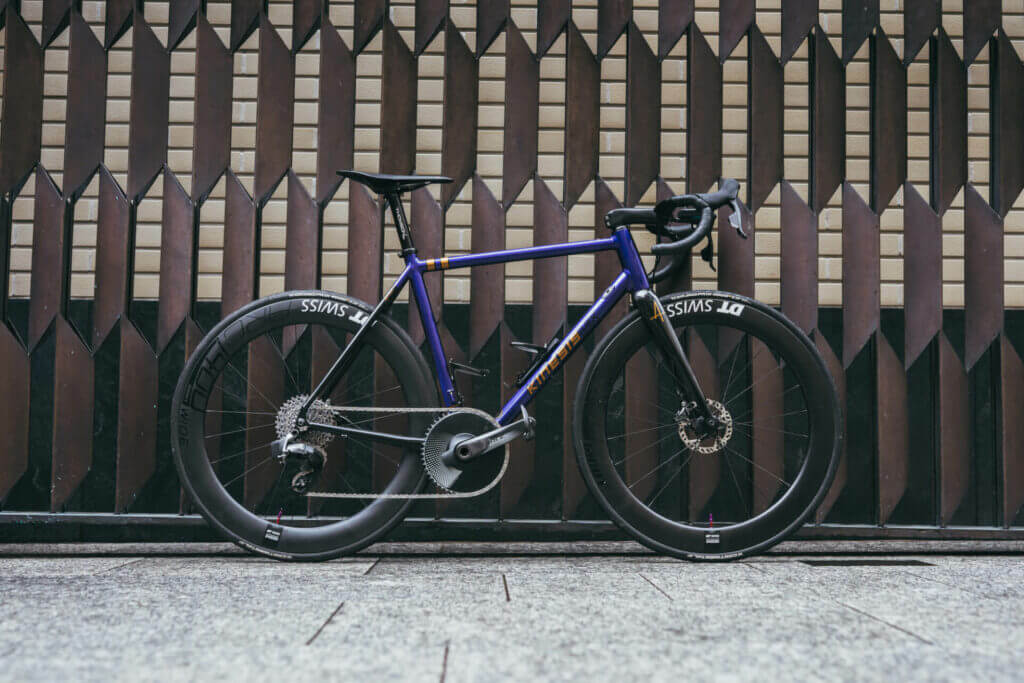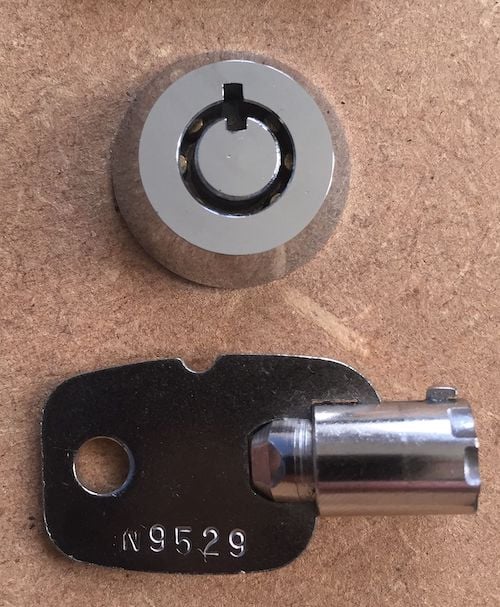
What can we do to make sure that bikes never get stolen? Unfortunately, no matter what we do, thieves will always put a lot of thought into stealing your bike.
However, now that we understand where and how bikes get stolen, we can reduce the likelihood of it happening. The most important thing is to make sure that your bike is a lot harder to steal, so the thieves will think twice and move on.
- Storing and Parking Locations
- Knowing the Right Kind of Locks for the Right Occasion
- How to Lock Your Bikes Using the Right Locks
- Investing in Anti-Theft Gadgets and Accessories
- Theft Prevention for Parts
- Importance of Always Being Prepared
- How to prevent bike theft (Part 1): Where and How bikes get stolen
Storing and Parking Locations

Keep Your Bike Indoors or Undercover
Given that there are many cases of theft on residential premises, the only safe way to store a road bike at home is indoors. Unfortunately, there isn’t really a better option. If you are storing your bike in a garage or on a balcony, make sure that the bike is locked, and it is not obvious from the street. If you have no choice but to store your bike outside, check to see if your local council provides bike hangars which can be a safe place to ensure your bike stays protected. Covering the body of the bike will also reduce the impact of wind and rain which can cause harm to your components.
Minimize the Parking Time
The longer bikes are parked, the more likely they are to be stolen or tampered with. Places like storefronts tend to have short bike parking times whereas parking at train stations, schools, and large shopping centres often increases the length of time bikes are parked. If you must spend a long time parked, you should take maximum anti-theft measures so that it can’t be easily stolen.
Avoid Parking at the Same Location
As we discussed earlier, parking bikes in the same place all the time increases the likelihood of being targeted in a pre-planned theft. Cycle parks at train stations and schools are often used at set times, so the thieves may be aware of the owner’s activities before committing the crime. If you have no choice but to use one of these parks, you should make sure that the locks are tight, without any slack, and also pay attention to the placement of monitors and surveillance cameras.
Knowing the Right Kind of Locks for the Right Occasion
Wire Locks, Chain Locks, and Folding Locks
Lightweight, coiled wire locks are among the most widely used, however, they can be cut with small tools in a matter of seconds. This makes them an easy target and increases the chance of your bike being stolen even for short-stay parking. Chain locks and folding locks are sturdier than wire locks, but they are also heavier. There are locks that are both lightweight and robust, such as the OTTOLOCK. However, all of these locks have the risk of being cut, so it is not safe to solely rely on them.
D-Locks

D-locks are said to be the most robust of all locks. However, they can weigh more than 300g, with some of them weighing as heavy as 1 kg. The heavier the lock, the more robust it tends to be. They are so heavy that most of the time they need to be carried in a backpack or large saddlebags. Due to the nature of road bikes, having such heavyweight locks is less than ideal for a long ride.
Avoiding Tubular Locks

Most people imagine thieves cutting the locks off when stealing bikes. However, with tubular locks (the ones shaped like an on/off button with a circular keyhole and single notch) picking the keylock is an easy task for a seasoned thief. No matter how robust your lock is, if you do not have the right kind of keylock, your bike can become an easy target. With the help of a lock pick, tubular key locks can be swiftly dealt with without drawing attention.
Choose a Tight Lock
If your lock is loose with a lot of space between your bike and the object you have secured it to, it will be easier for the thief to manipulate bolt cutters and cut through it. The harder it is for the bike to move around, the harder and more time-consuming it will be for the thieves to steal.
How to Lock Your Bikes Using the Right Locks
Locking Bikes to an Immovable Object
Road bikes are very light and can be easily carried and stored. It is important that you lock your bike frame to a structure connected to the ground or a heavy object such as a bike rack. This is a basic anti-theft measure because it avoids the risk of the bike being taken away without unlocking.
Locking Your Bike That Does Not Touch the Ground
If the lock touches the ground, thieves can use their weights to forcefully cut or break the lock more easily. To avoid giving them this advantage, make sure that locks are high up and away from the ground.
Locking Your Wheels with Your Bike
Since wheels with quick releases can be easily removed without tools, it is important to make sure you loop around your wheels as well as your frames when it comes to locking your bike. If you try to lock the front and rear wheels together, a reasonably long chain or wire is required. Therefore, considering using multiple locks might be also an option.
Investing in Anti-Theft Gadgets and Accessories
Motion Detection Alarm
On top of having the right kind of locks for the right occasion, having an extra layer of security in the shape of an anti-theft device is another effective way of keeping your bike out of thieves’ hands. Having a motion detection device that triggers a loud alarm will not only be effective to alert passers by making thieves uncomfortable, but the unexpected noise will also cause stress and panic in areas out of sight, causing thieves to cut their losses and move on. Alarms louder than 90dB are recommended so they won’t blend into the background.
Tracking Devices

Location tracking devices are useful especially if the bike is stolen. There are two main types of devices: those that track location via GPS and those that use a Bluetooth network.
1)Bluetooth
The effective range of Bluetooth tracking devices such as airtag is approximately 10-20 metres. They rely on a network of people who are using the same product within this range to track their location. A Bluetooth device works by using radio waves to connect with smartphones and computers. This makes them particularly useful in populated areas. However, while it is highly effective to search for lost items such as wallets, bikes can be transported to who knows where making Bluetooth a difficult tool to track stolen vehicles.
2)GPS
Devices that utilise GPS receive location information from satellites via an installed module. This type of device is more suitable for tracking bikes since it can receive location information in a wide range of places, just like a phone would receive its reception. However, it should be noted that an additional subscription fee is usually necessary as it requires a means of communication (similar to a monthly contract for a phone). In addition, the GPS function consumes a lot of power and quickly runs out of battery power. Therefore, a device like the “AlterLock” that works only in the event of theft would be suitable.

AlterLock is a useful anti-theft device. It is an alarm/GPS tracking security device that lets you keep a remote eye on your bike and notifies you on your phone when the device detects movement while the bike is locked.
Theft Prevention for Parts
Take Your Lights and Cycle Computers with You
Lights and cycle computers could cost more than £100. However, these parts cannot be locked together. If you are going to be away even for a short time, you should remove them and carry them with you at all times, even if it is a bit of a hassle.
Locking with Wheels and Investing in Anti-Theft Accessories
One way to prevent wheels from being stolen is to invest in anti-theft accessories for wheels. Since wheels are often only removed for maintenance or replacement, using parts that can only be removed with a special tool wouldn’t be inconvenient, but be an effective way to make sure that thieves eliminate your bike parts from being stolen.
Using Anti-Theft Bolts
Saddles and seat posts are also parts that can be easily removed by anyone with an allen key. Expensive parts like carbon saddles or seat posts can make your bike particularly vulnerable to theft. Replacing your bolts with something that cannot be removed with an allen key can be an effective method for theft prevention.
Importance of Always Being Prepared
No matter how many precautions you take, theft can still occur. Therefore, it is important to always be of the mind that your road bike is a target. Making sure to store your bike locked inside of your house as much as possible is a basic rule. When you are outside, it is best to avoid parking your bike for long periods and to lock it to an immovable object tightly above the ground. It is also important to use motion-detection alarms such as “AlterLock” which also has an integrated GPS tracking function to increase deterrence and for your own peace of mind.
To ensure that your road bike is protected against theft, it is important to be mentally prepared as a cyclist. It would be such a shame if your bike was stolen due to simply being careless and parking without locking the bike. If you are going to be away from your road bike for even a short period, be sure to take anti-theft precautions under all circumstances. If many cyclists take thorough anti-theft measures, the overall number of thefts will decrease and the number of people who try to steal will also decrease, creating a long-term cycle of change that would benefit all of us as bike enthusiasts.
